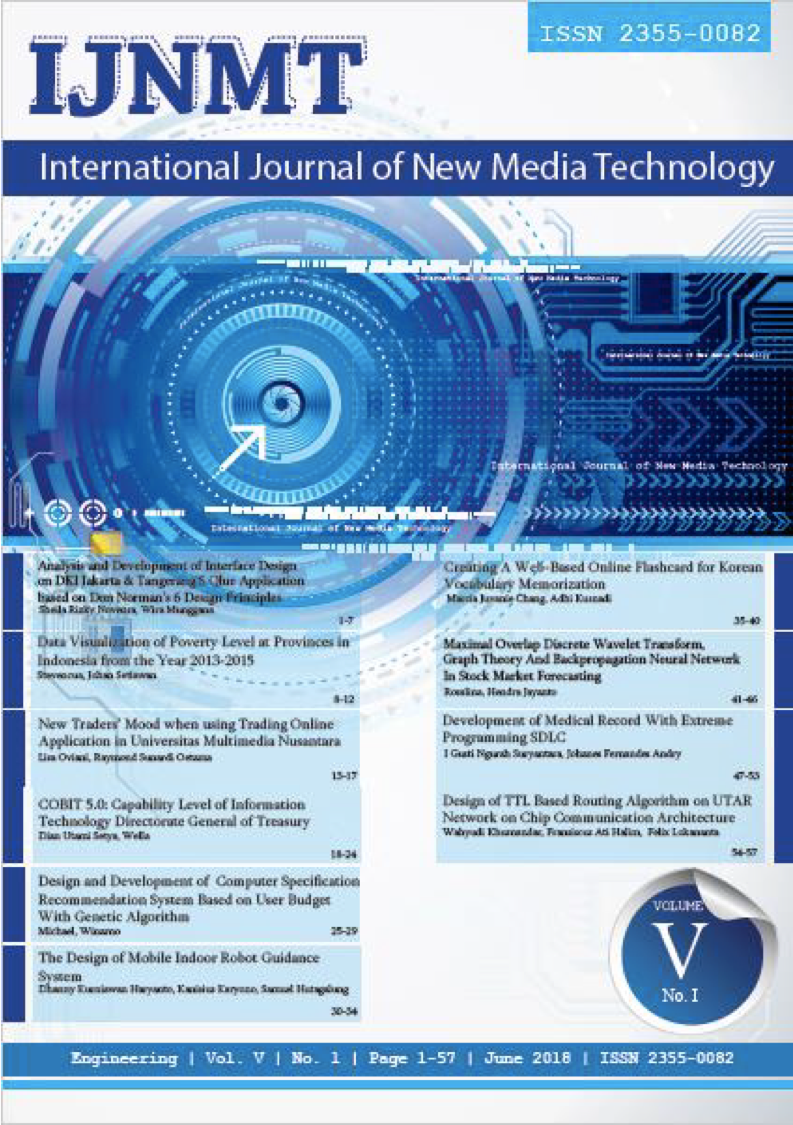Maximal Overlap Discrete Wavelet Transform, Graph Theory And Backpropagation Neural Network In Stock Market Forecasting
DOI:
https://doi.org/10.31937/ijnmt.v5i1.679Abstract
The aim of this paper is to get high accuracy of stock market forecasting in order to produce signals that will affect the decision making in the trading itself. Several experiments by using different methodologies have been performed to answer the stock market forecasting issues. A traditional linear model, like autoregressive integrated moving average (ARIMA) has been used, but the result is not satisfactory because it is not suitable for model financial series. Yet experts are likely observed another approach by using artificial neural networks. Artificial neural network (ANN) are found to be more effective in realizing the input-output mapping and could estimate any continuous function which given an arbitrarily desired accuracy. In details, in this paper will use maximal overlap discrete wavelet transform (MODWT) and graph theory to distinguish and determine between low and high frequencies, which in this case acted as fundamental and technical prediction of stock market trading. After processed dataset is formed, then we will advance to the next level of the training process to generate the final result that is the buy or sell signals given from information whether the stock price will go up or down.
Index Terms”stock market, forecasting, maximal overlap wavelet transform, artificial neural network, graph theory, backpropagation.
Downloads
Downloads
Published
How to Cite
Issue
Section
License
Authors retain copyright and grant the journal right of first publication with the work simultaneously licensed under a Creative Commons Attribution-ShareAlike International License (CC-BY-SA 4.0) that allows others to share the work with an acknowledgement of the work's authorship and initial publication in this journal.
Authors are able to enter into separate, additional contractual arrangements for the non-exclusive distribution of the journal's published version of the work (e.g., post it to an institutional repository or publish it in a book), with an acknowledgement of its initial publication in this journal.
Copyright without Restrictions
The journal allows the author(s) to hold the copyright without restrictions and will retain publishing rights without restrictions.
The submitted papers are assumed to contain no proprietary material unprotected by patent or patent application; responsibility for technical content and for protection of proprietary material rests solely with the author(s) and their organizations and is not the responsibility of the IJNMT or its Editorial Staff. The main (first/corresponding) author is responsible for ensuring that the article has been seen and approved by all the other authors. It is the responsibility of the author to obtain all necessary copyright release permissions for the use of any copyrighted materials in the manuscript prior to the submission.















